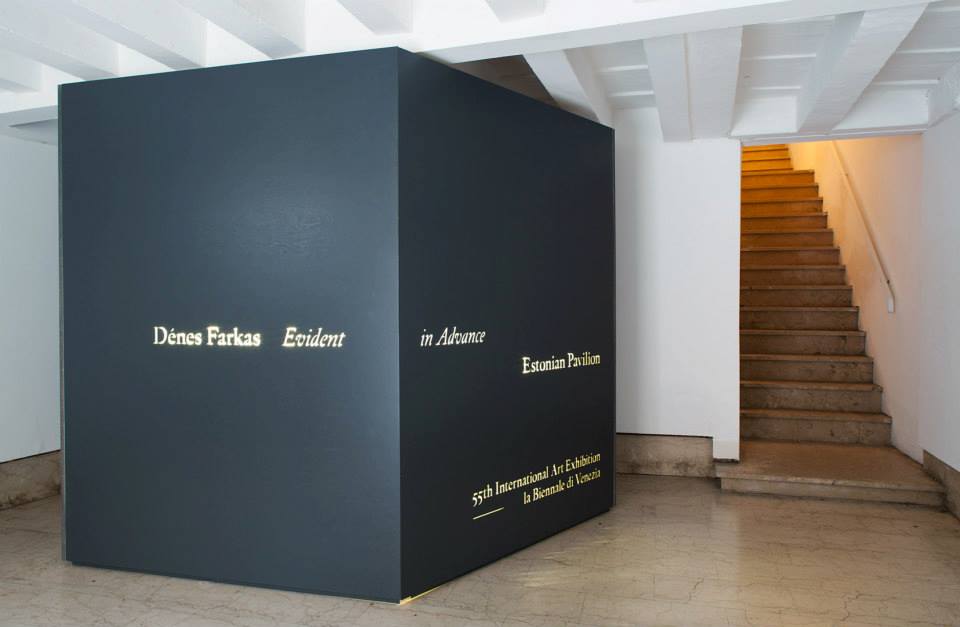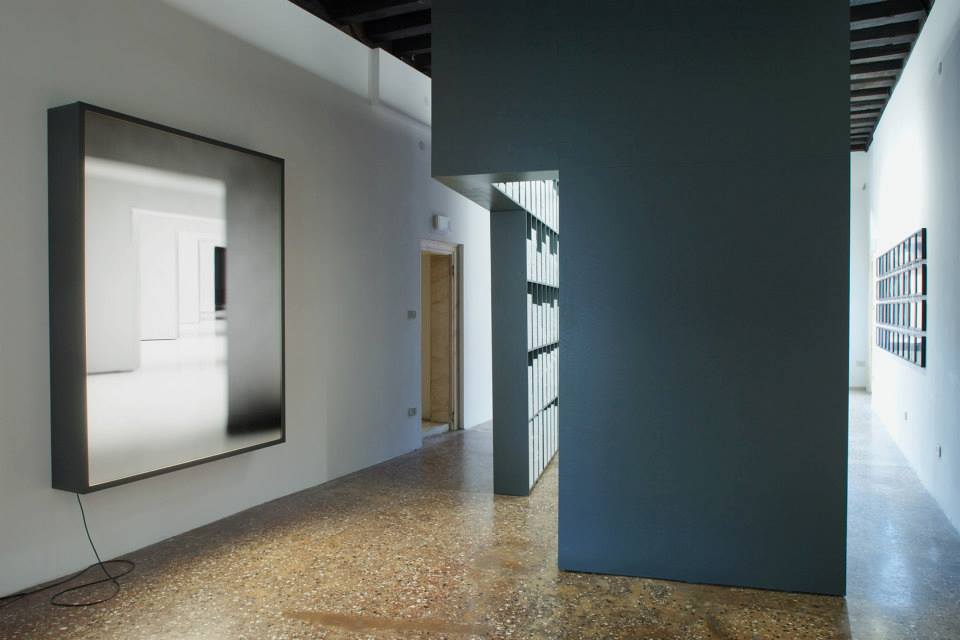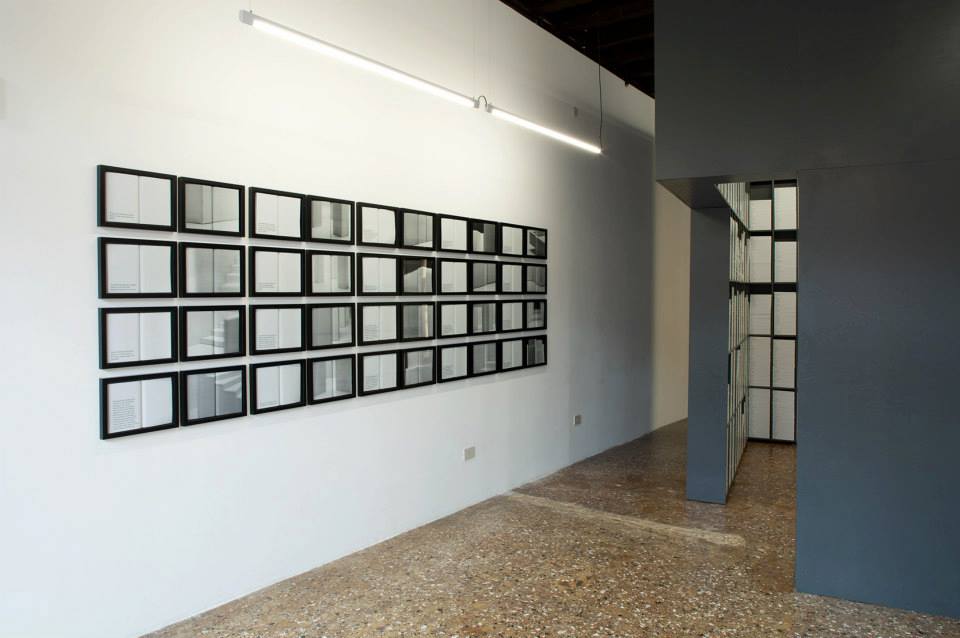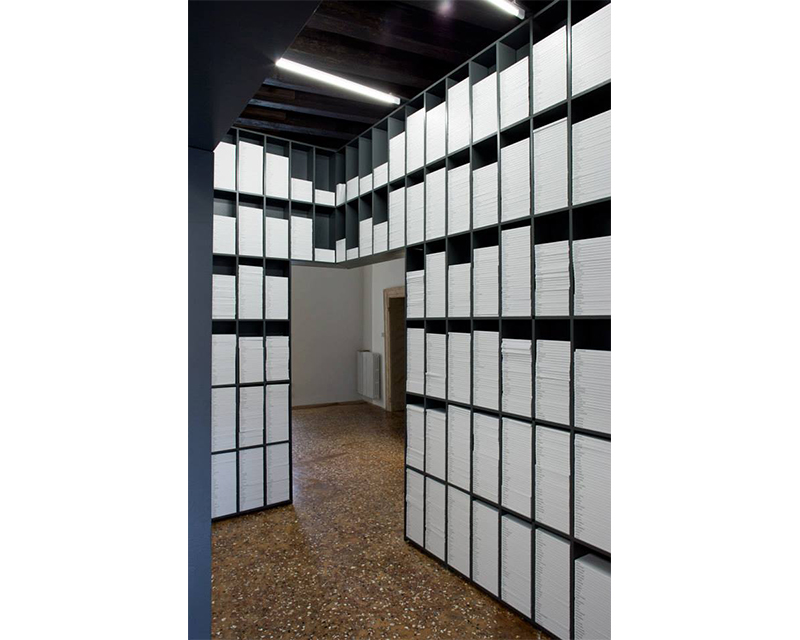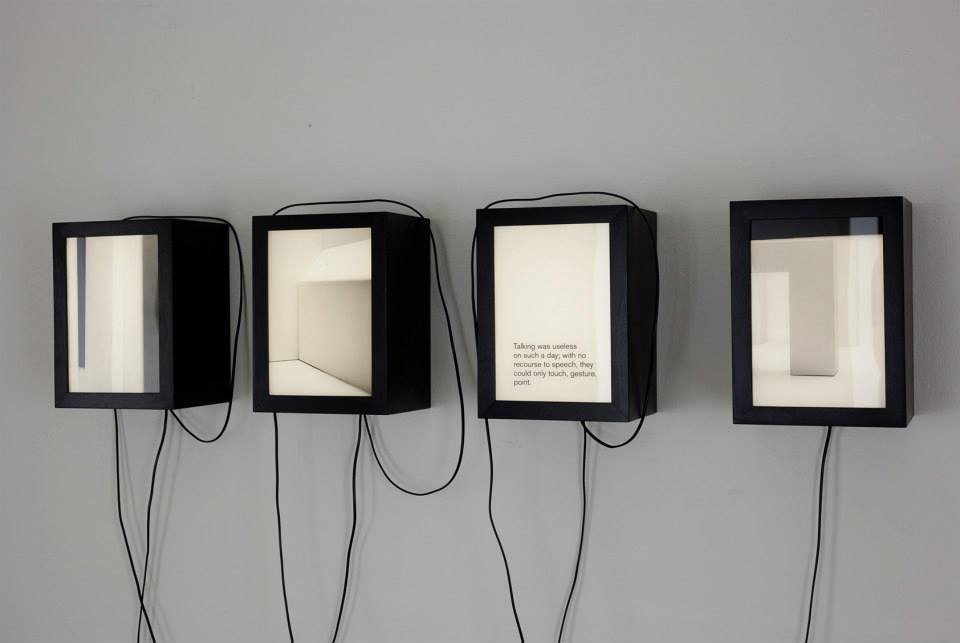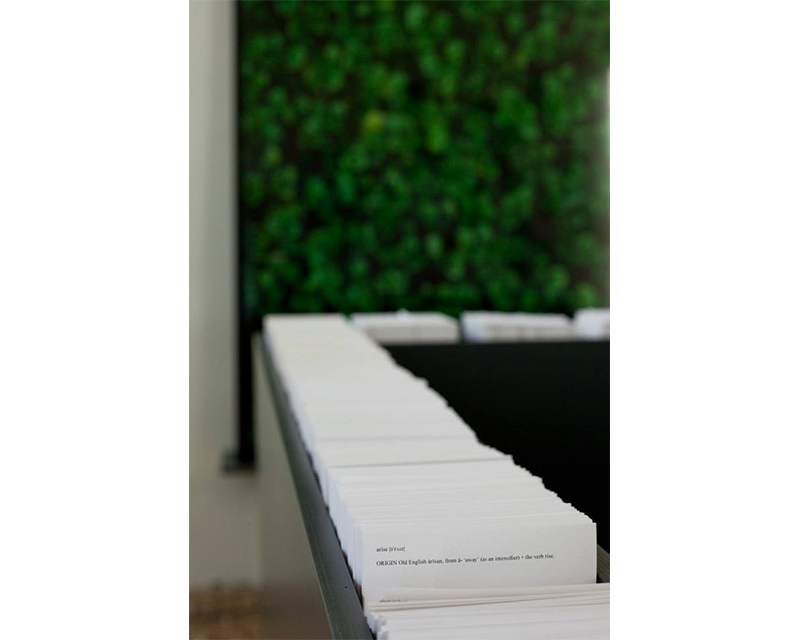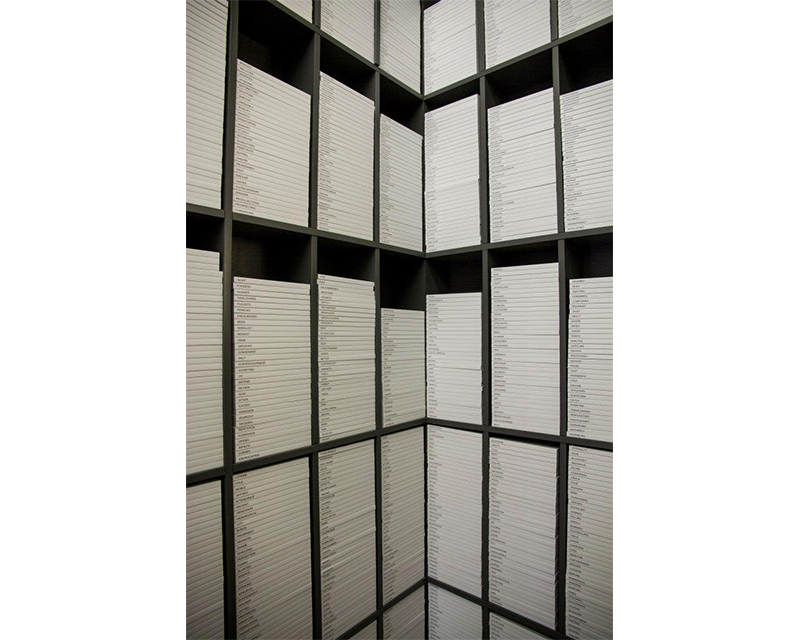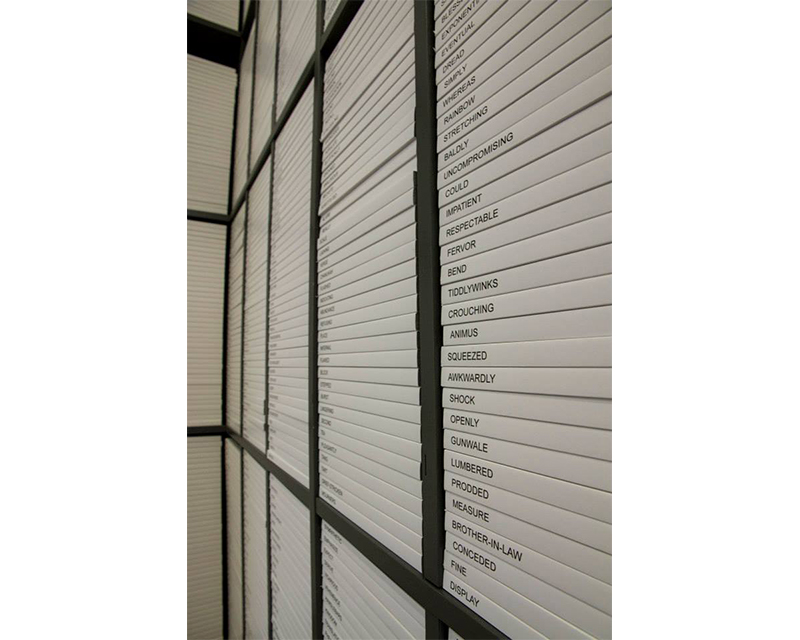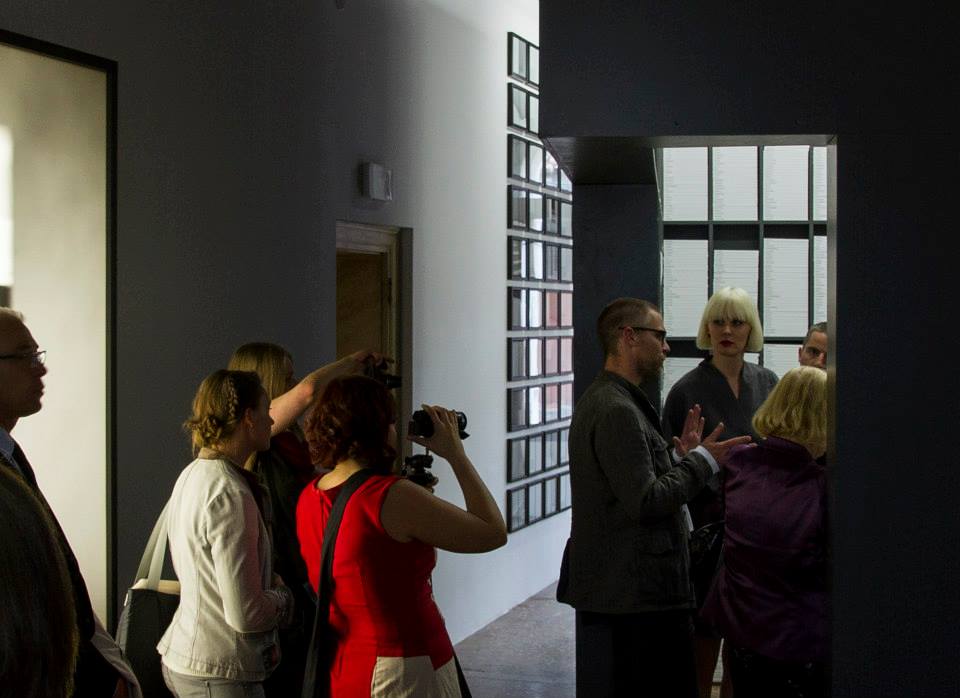Estonian Pavilion Venice Biennale
Evident in Advance, Dénes Farkas
2013
Venice, IT
- Commissioned by Maria Arusoo
- Artwork developed by Dénes Farkas
- Curated by Adam Budak
- Exhibition Design by Studio Miessen
- Project Leader: Markus Miessen, Diogo Passarinho, Yulia Starsev
- Team: Martin Pohl, Mehran Mojtahedzadeh
- Production Team: Vesa Humalisto
- Catalogue by Zak Group
- Photography by Paul Kuimet
The exhibition EVIDENT IN ADVANCE on the occasion of the 55th Venice Biennale developed a vast diapason of issues, grouped around the elusiveness of language, the (im)possibilities of translation and the logic of infinite re-translations. Its concept was playfully inspired by an adventurous storyline of American writer, Bruce Duffy’s ground-breaking novel, „The World As I Found It“ (1987), a melange of fiction and reality, truth and fake, where history, biography and philosophy were intertwined in a witty narrating of lives of three philosophers, Ludwig Wittgenstein, Bertrand Russell, and G. E. Moore.
Here, on the pages of this fascinating book, contemplation, free thinking and magnetic philosophy constructed an architecture of thought, precise and logic, but unstable too, challenged by a polymorphousness of sense and meaning.
The exhibition in Estonian Pavilion was orchestrated as a composition based upon a slightly varying sets of a (as if musical) score: the articulations of the same story created from the carefully deconstructed novel and from other related sources (the texts of the above mentioned philosophers, texts of the authors and co-authors of the project) were spatialized within a given physical space and a mental space of the viewer’s perceptive field. Here, we were at the threshold of a meaning’s construction as an on-going study of a repetition and silence.
The very act of working with the original text – taking apart, dismantling, editing and appropriating – was conducted under a supervision and a control of the author of the novel himself – a mastermind – and assisted by a linguist, an expert of sorts, a passionate of words, letters, and their troublesome relationships and by a scholar, an expert in echoes and resonances, shadow-meanings and their secret influence.
The rigid interior architecture of Estonian Pavilion with a vast entrance-hallway and adjacent living-rooms wrote a potential scenario of a master-narrative and chapter-like episodes. The rooms were chamber-minds – rough references to situations, positions and spaces that surround a more complex, almost questionably standard-like exhibition space. A close collaboration with an architect helped to deal with such a complex construction site by turning it into a realm of criticality where language was perceived as a mathematical issue in a truly Wittgensteinian way.
The exhibition’s concept relied upon elements that came from various fields of culture and knowledge production. A variety of direct references in a spatial concept of related rooms but also the articulation of the main thought were fuelled by the ideas of collections, archives, museums, libraries, but also of dictionaries, indices and cataloguing. They dealt with the systems of order and classification and corresponded with the usage of and relationality between public and private spaces. How do we understand the same word or sentence in dissimilar surroundings? How do we communicate in different situations? How do we write space? How can we achieve a real communication with a medium of an exhibition?
Challenged by Bruce Duffy’s act of a narrative forgery, the exhibition explored a doubt and suspension of belief by a further reconsideration of the thoughts of the author’s protagonists in a reasonably critical way. Breaking up the imaginary story and creating a whole new dizzy polylogue produced an intriguing but also heavily coded play. The narrative was not eventual – the visitor, drawn in a textual net, was supposed to become a part of a unique story. Various fragments of the main text and elements of a stage paired in different forms, mostly not visible at first sight, contributed to a new geometry of a site, both physical and mental. A relatively silent play on a very simple and restrained stage – an artificial setting, very likely just a model, existing only as reproductions on photographs, puzzles of a generic cartography. Here, we were in a realm of palimpsest, overlap of texts, an ivory towers of memory, history and contemporary desire to replay the times past.
However EVIDENT IN ADVANCE rejected a hyper-narrative which would emphasize the fabricated mastery and perfection of a human mind. Instead, it focused on errors and logical mistakes, moments of weakness and inability. From the very beginning, being haunted by its predictability, the narrative was condemned to a delicious failure and collapse. Aware of such a fate, the project in a Beckettian way exercised its own inabilities in an ritualistic act of repetition and seriality.
Here, there was a maze of almost identical rooms, acting like words in a lost sentence before its articulation. What are we saying? Why are we saying (it)? The content and its pronounciation were seemingly blurred. How do we understand (it)? How are we trying to put bits of information together in order to construct a useful and meaningful story? The process of production and the act of reception concentrated on such questions. The despair conducted the deconstruction of a text and the assemblage of installations. Using the same words and the same sentences and even the same logical constructions, we were still in a danger of manoeuvring through misled areas of meaning and common sense.
Proustian paraphrase „a la recherche de la recit perdu“ (mis)guided the authors of this project. In order to receive instructions on how to navigate in the exhibition’s real and imaginary space, it was necessary to open and study the specially created books, while walking around and examining the potential connections between images, objects and words, sentences and episodes. It was not the authors’ intention to create a well recognizable exhibition-like setting as a whole. Eventually the aim was to generate a bit dysfunctional interactive installation within such familiar although uncanny spaces.
Playing with the fragments and resetting the acknowledged codes of a play but also desperately trying to decipher the borders – the end and the beginning – and, last but not least, the centre, a guarantee of the meaning of the story; a story which might not be constructable; or the one which does not exist at all; a phantasmagoria.
Dénes Farkas, the artist
Adam Budak, the curator
